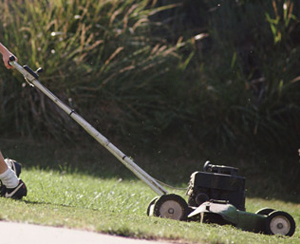
If you rely on your treadmill readout, you may be burning fewer calories than you think.
But more important: If you rely on conventional exercise advice, you may be burning fewer calories than you could.
Let's start with the treadmill. Anytime you see "calories burned" on an exercise machine display -- or anywhere else, for that matter -- it includes the amount of energy you expend when you're just sitting around, says Alex Koch, Ph.D., an exercise scientist at Lenoir-Rhyne University. "For instance, depending on your size, you burn about 1.2 calories a minute while you're sleeping," explains Koch. "So to know how many extra calories you're burning with exercise, you have to subtract that number from your total." (Click here to learn The Truth about the Calories You Eat.)

Example: A 180-pound guy might burn 120 calories while mowing his lawn, but that's not 120 additional calories (as many people assume) -- it's 120 calories total. Turns out, it's only 60 more calories than what he'd expend while surfing the Web.
The same rules apply to your workout. If you really want to know your true bonus-burn, you have to calculate the calories you would have expended had you not exercised -- see the alternative "activities" in the chart below -- then subtract them from your total. You might find that the 400 calories you burned at the gym was actually just 300 more calories than you would have burned at your desk.
| Activity | Calories per minute |
|---|---|
| Watching TV | 1.4 |
| Typing on a computer | 2.5 |
| Driving a car | 2.7 |
Admittedly, this information is more interesting (and disappointing) than it is useful. After all, most of us only have so much time to exercise in the first place. As such, what truly matters -- at least in terms of fat loss -- is that we maximize every minute of our workouts. And perhaps that's where we've been misled. (Watch out at the grocery store, too: These 18 Supermarket Lies could be making you fat.)
It's well-documented that an aerobic activity like moderate jogging burns more calories than weight training -- an activity that's highly anaerobic. In fact, if you go by the published numbers, you find that even golfing beats out a light circuit workout with weights. But recent research shows a new perspective. (Sorry, golfers!)
When Christopher Scott, Ph.D., an exercise physiologist at the University of Southern Maine, began using an advanced method to estimate energy expenditure during exercise, his data showed weight training burns more calories than originally thought -- up to 71 percent more. Based on these findings, it's estimated that performing just one circuit of eight exercises -- which takes about eight minutes -- can expend 159 to 231 calories. That's about the same as running at a six-minute-mile pace for the same duration. (Yes, that's total calorie-burn, just like the treadmill calculates.)
"Exercise physiologists often use the techniques for estimating the energy expenditure of walking and jogging and apply them to weightlifting," says Scott. "But clearly, aerobic and anaerobic activities differ, and so too should the way we estimate their energy expenditures."
Scott's revelation is most certainly a relief to gym rats everywhere, who no doubt wondered why an intense, energy-sapping weight workout supposedly burned so few calories.
Case in point: Watch this video of the dumbbell lunge with single-arm overhead press, as demonstrated by Men's Health fitness expert B.J. Gaddour. Then try doing 10 repetitions on each side, while using a challenging weight. Rest 60 seconds, and repeat two more times. This should convince just about anyone that you can torch a ton of energy with dumbbells. (For more than 500 body-sculpting exercises, check out The Men's Health Big Book of Exercises and The Women's Health Big Book of Exercises.)
But there's another benefit to resistance training. Unlike aerobic exercise, lifting increases the calories you burn while you're sitting on the couch. One reason: Your muscles need energy to repair and upgrade your muscle fibers after each weight workout. For instance, a University of Wisconsin study found that a total-body workout elevated metabolism for 39 hours afterward. What's more, these folks also burned a greater percentage of their calories from fat during their downtime, compared with those who weren't hitting the weights. (By the way, a good dose of hard sprints may offer a similar benefit.)

The upshot: If you want to burn more calories per minute -- both during and after your workout -- you need to lift weights. Yes, you might have been told that going at a moderate pace on the treadmill, stationary bike, or elliptical machine -- often called the "fat-burning zone" -- is the best way to fight fat. But the truth is, the numbers and the science just don't add up.
Now don't misinterpret the message: Aerobic exercise is still a great activity for health and fitness, and yes, it burns calories, too. So I'm not suggesting that anyone exclude it. Just don't skip the weights entirely because you think you’re going to "burn more calories" on the treadmill. Chances are, you won't.
Like the idea of weights, but not sure where to start?
Well, you can't expect great results if you spend more time sitting or talking than you do lifting. You need a weight-training plan that’s specifically designed to help you burn flab. Try The Spartacus Workout. It's Men's Health's most popular fat-blasting workout ever.
Popular Stories On ThePostGame:
-- Are You Exercising Too Hard?
-- The World's Best Push-up Workouts
-- 12 Marathons For 2012
-- Natalie Coughlin: Golden Girl, Golden Palate




